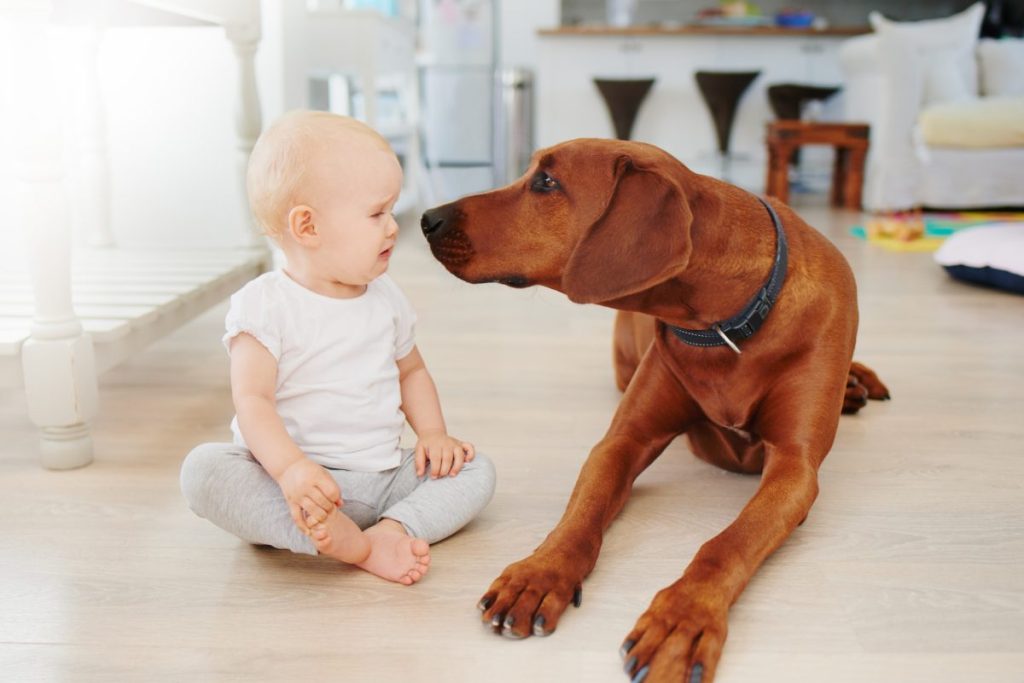The birth of a baby is a wonderful event for your human family. To make it an equally joyous occasion for your dog, you need to give them some special attention to help them cope. We have some tips to help you make the introduction between your dog and your baby go more smoothly.
Understanding your dog’s reaction to a new baby
Since dogs are pack animals and follow a strict hierarchy in their lives, having a strange new member of the pack might confuse them. In the beginning, your dog will probably consider the new baby as a member of the lower pack order and may display dominant behavior such as growling, crouching, or laying their ears down or back.
You need to stay alert for signs of aggression and correct it immediately. Dogs that have deep bonds with their owners may stop eating and/or sink into depression. Consult your veterinarian or a licensed animal behaviorist if you cannot control these problems on your own.
Before your baby’s arrival
There are some things you can do to get your dog used to the new scent before you bring your baby home. Set up the baby’s room. Then, leash your dog so they understand that they’re only allowed in the baby’s room when you approve it. Take your dog into the room to sniff the new furniture and accessories. Set containers of baby powder and lotions in rooms around the house. That way, the dog gets used to smelling the baby everywhere.
Bringing baby home
When you bring your baby home, make their room off-limits — with no exceptions — to the dog. Teach the dog that they cannot approach the baby without your approval. Establish a boundary line around the baby and make the dog honor that boundary.
Eventually, as your dog shows respect for the new member of the pack, they can look and sniff at the baby. Try not to panic and yank the baby away if the dog comes near because the dog might interpret that to mean the baby is a threat to the pack.
Though you’ll likely be busy, don’t forget to spend personal time with your dog, playing their favorite game or going for a long walk, so that they don’t feel abandoned or rejected.
Even with all the special care you take, some dogs may never accept children. There are usually no behavioral problems with dogs that were raised with children. That said, you still need to supervise their interactions closely. If a child has a history of mistreating pets, you could have significant obstacles to overcome that might require the services of a professional.
Protecting your dog
Of equal importance is to teach your children the proper way to treat your family dog. Make them understand that dogs feel pain and get lonely just like people. Correct any inappropriate or unkind behavior toward the dog. Praise your children when they are gentle and loving with the dog.
Children also need to learn that a dog will naturally chase them if they run. Also, playfully grabbing a dog’s tail is an open invitation to the dog to chase the children and jump on them.
A little extra time and care on your part can make your dog’s acceptance of your new family addition go much smoother.





